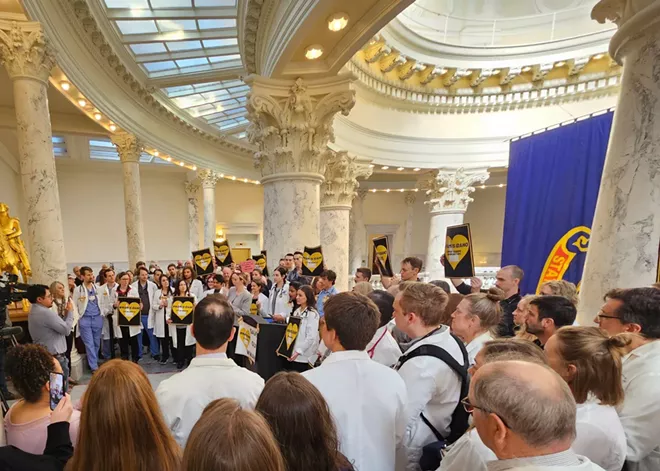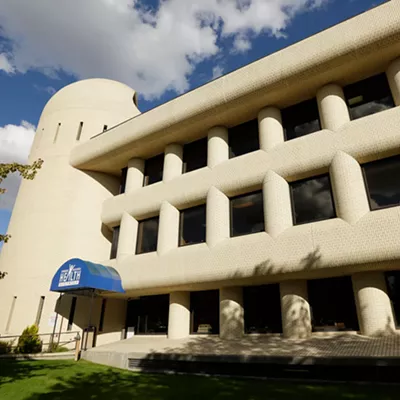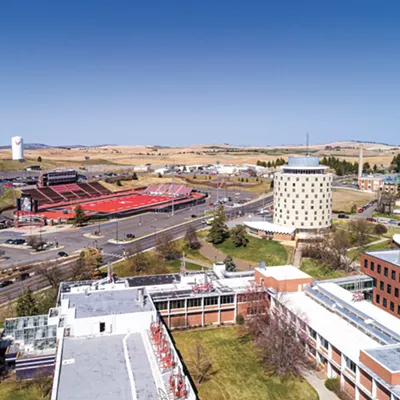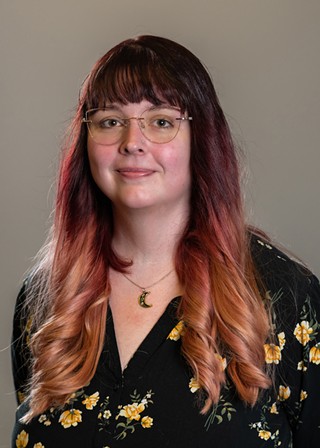
For more than half a century, medical students from much of the northwestern United States have been able to attend institutions in their home state in partnership with the University of Washington School of Medicine through a program known as WWAMI.
The program is open to students in Washington, Wyoming, Alaska, Montana and Idaho, who spend the first two years of medical school at nearby universities. During the final two years through the University of Washington, the students participate in clinical clerkships, which may be located in their home state or other states in the program. Most of the clinical training is conducted in rural communities, as one of the major goals of the program is to produce family physicians that rural areas desperately need.
Idaho has participated in WWAMI since 1972, with students starting their training at the University of Idaho. While the initial cohort had just six Idaho medical students, that expanded over time to 20 Idaho students, and since 2016 each Idaho class has had 40 students.
But the relationship with WWAMI could soon be ended if Idaho lawmakers pass House Bill 176, which has been sent to the House floor with a 9-5 "do pass" recommendation from the House Education Committee. As of early Feb. 25, the bill was waiting to be read on the floor.
While lawmakers say they are concerned about drawing more doctors to the state, which ranks 50th in the nation in physicians per capita, the bill would phase out the WWAMI program over the next four years, with no WWAMI seats reserved for Idaho students after the 2026-27 academic year. Any students enrolled before the cutoff would be allowed to finish their education through the program.
On Feb. 14, bill sponsor Rep. Dustin Manwaring, R-Pocatello, told the House Education Committee that the goal of the bill is to ultimately see Idaho open its own institution.
"Idaho does not have its own state-run medical school," he said. "I think this is a big part of how we can move that conversation forward."
In the meantime, the bill provides for the state to contract with two medical schools in Idaho and/or neighboring Mountain time zone states.
Manwaring suggested that the University of Utah School of Medicine, which currently trains 10 Idaho medical students per year, could serve as one of those two institutions. Dr. Benjamin Chan, the associate dean of Idaho affairs for Utah's medical school, testified that the school could accept more Idaho students.
However, physicians and faculty who help train new doctors through WWAMI are extremely concerned about the proposal to sever ties with UW, and note that the bill does not explicitly include an agreement with University of Utah.
Dr. Mary Barinaga, the assistant dean for Idaho WWAMI and a family physician, helps recruit the physicians or "preceptors" who host clinical clerkships for students. She says there are about 650 such UW faculty throughout Idaho.
"Preceptors have reached out to me and said, 'Hey, if this partnership with UW dissolves, we still want to be a teaching site for the University of Washington. If it's not possible to take Idaho students, we'll take the Alaska and Montana and Washington and Wyoming students,'" Barinaga tells the Inlander. "This bill just assumes that all these sites will flip over, and one day they're teaching University of Washington students and the next they'll be teaching University of Utah students. It's magical thinking to think that will work."
In the statement of purpose for the bill, Rep. Manwaring, along with Rep. Mike Moyle, R-Star, and Sen. Dave Lent, R-Idaho Falls, pointed to two other major matters that prompted the legislation. First, WWAMI has not accommodated the Idaho Legislature's 2022 request (made by resolution) to add 10 more seats for Idaho students. Secondly, the University of Washington "also elected not to sign an amendment to the contract with Idaho, restricting the use of Idaho state funds for abortion."
The University of Washington has informed the lawmakers (including through testimony at the Feb. 14 public hearing) that no Idaho state money is used for abortion education or abortion.
As for the seats, the Idaho Legislature did not allocate any more money for them, nor did the Idaho State Board of Education direct WWAMI to expand, Barinaga says. Furthermore, adding more seats requires more clinical sites, which take time to add.
She says it's been challenging to find more sites in Idaho, particularly since there's more competition now — the Idaho College of Osteopathic Medicine, a for-profit medical school, opened in Meridian in 2018, bringing in classes of more than 160 students per year, just after WWAMI doubled its number of Idaho students in 2016. Plus, the pandemic resulted in the loss of several teaching sites, as some physicians stretched thin could no longer take on students, she says.
"Finding people who are interested and willing to make a sacrifice to spend time with the students is hard," Barinaga says. "There are many medical schools expanding and opening up. The clinical rotation problem is a national problem."
The Idaho College of Osteopathic Medicine trains students to get a Doctor of Osteopathic Medicine, or DO, not a Doctor of Medicine, or MD. Multiple physicians who testified during the Feb. 14 hearing emphasized that if the state drops WWAMI, the strong preference would be to replace that partnership with a program that trains MDs.
Dr. Bryn Parker, a family physician who also practices surgical obstetrics in Moscow, says that being able to attend WWAMI at in-state tuition rates was critical for her. As someone who grew up in Elk City, Idaho, at the time a town of about 400, being able to train in all five WWAMI states helped immensely in preparing her for residencies after medical school, and ultimately to better serve her patients.
"[WWAMI] has demonstrated for years that it returns Idaho residents home to be Idaho physicians," says Parker, who is now a site director training students through Idaho WWAMI's longitudinal rural program.
The Idaho Academy of Family Physicians reports that 51% of the 747 Idaho WWAMI graduates have returned to the state to practice, and the return on investment since 1972 is actually 73% when you include students from other states who ended up practicing in Idaho.
"It is such a rich experience for students, and it is so shortsighted to try to force this through without a functioning plan," Parker says. "From a fiscal perspective ... we have no idea how much this would cost to rebuild something within our state." ♦

























